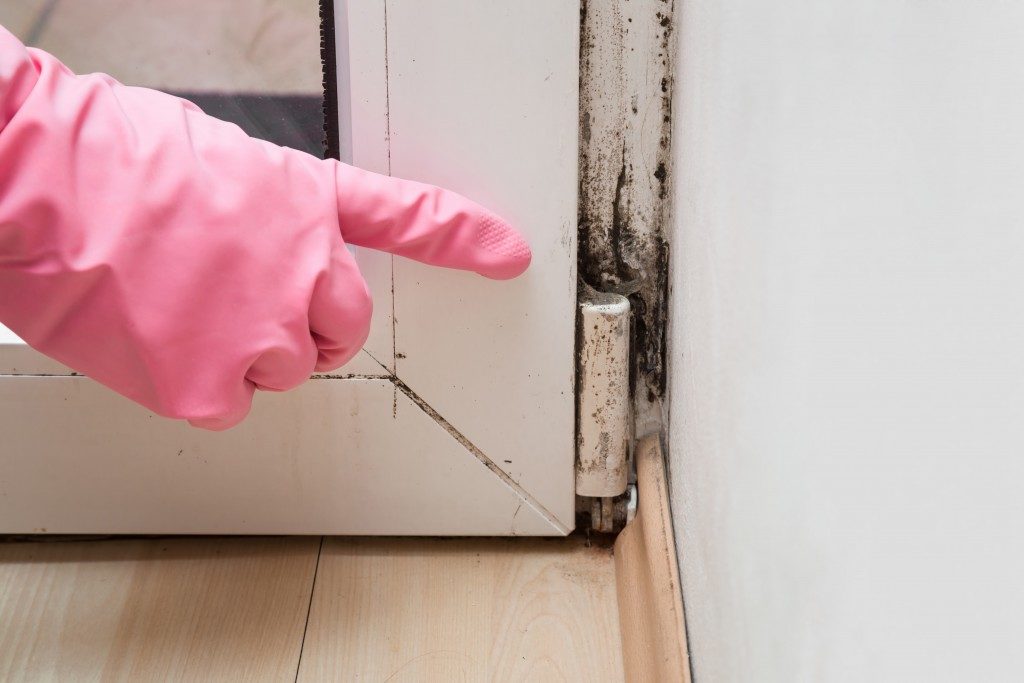What are two things that can ruin an otherwise lovely home? The answers are mold and mildew. Mildew has spores that can cause a host of nasal issues such as bloody nose and throat irritation. Mold, especially black mold, can be lethal especially to those with pre-existing respiratory diseases.
Don’t forget to take the following precautions on your next spring cleaning or repair spree to avoid developing mold and mildew infestation in your home.
Moisture Resistant Primer and Paint
One of the first things that come to mind when thinking of anti-mold precautions is moisture-resistant paint and primer. Primers set the foundation for the lasting power of paint, while paint formulas now have additives that resist the effects of moisture. Some paint formulas even have anti-microbial additives that prevent mold from growing on surfaces where they are applied to.
Moisture-resistant primers also prevent peeling and reduce the number of touch-ups homeowners need to do. Mildew-resistant paint must also be applied on surfaces scrubbed clean of existing mildew, which is simply removed by three-parts water to one part bleach.
Cutting Trees
 Believe it or not, tree sap can cause mold to grow on the side of your home, especially when it’s covered with vinyl siding. Before you cut your entire tree down, check if it’s the type of tree to release egregious amounts of sap. Evergreen—pine, spruce, fir, and cedar—and Deciduous—maples, apple, birch, and willow—tree varieties are all prone to releasing sap.
Believe it or not, tree sap can cause mold to grow on the side of your home, especially when it’s covered with vinyl siding. Before you cut your entire tree down, check if it’s the type of tree to release egregious amounts of sap. Evergreen—pine, spruce, fir, and cedar—and Deciduous—maples, apple, birch, and willow—tree varieties are all prone to releasing sap.
Homeowners should ensure that their tree branches are trimmed to prevent too much sap from falling on their siding. Gutters and drainpipes may also be clogged up by rainwater, leaves, and tiny branches that can help mold and mildew grow there.
Scrub Your Patio
The patio is susceptible to mildew and mold growth. Whether it’s stone, precast concrete pavers, or cement blocks, these surfaces are ripe hosts for spores, in addition to moss and algae. Aside from power washing the gunk away, what else can homeowners do to prevent unwanted organic bits from growing over them?
Copper, in its liquid form, is used to prevent algae, mildew, mold, and moss from growing on concrete pavers. Copper sulfate crystals can be dissolved in water and sprayed onto the afflicted patio. Homeowners must ensure that the solution does not run off into the greenery around the patio to prevent it from dying.
Starve or Heat Mildew Out of Clothes
Mildew and mold can grow on almost every surface, including clothes. Clothes can become a breeding ground for fungi and spores if they are exposed to excessive moisture. Damp clothing tossed into closets or dirty clothes deemed “clean enough” can infect clean clothing with mildew and mold.
Extreme heat, like direct exposure to sunlight, can kill the spores in clothes. Fabrics that allow for bleach should be bleached to remove mildew stains. Garments that can’t be exposed to bleach must be soaked in a gallon of warm water with a quarter of oxygen bleach.
If the problem with mold and mildew in your home has grown too big to be addressed by moisture-resistant paint, it may be time to bring out the big guns. Commercial mold and mildew removers can do the job in a pinch. Problem spots that grow beyond the power of commercial removers should be left to mold and mildew removal companies. These companies will ensure that your belongings stay safe while they get rid of spores that can make your home an unsafe and unhappy place.
